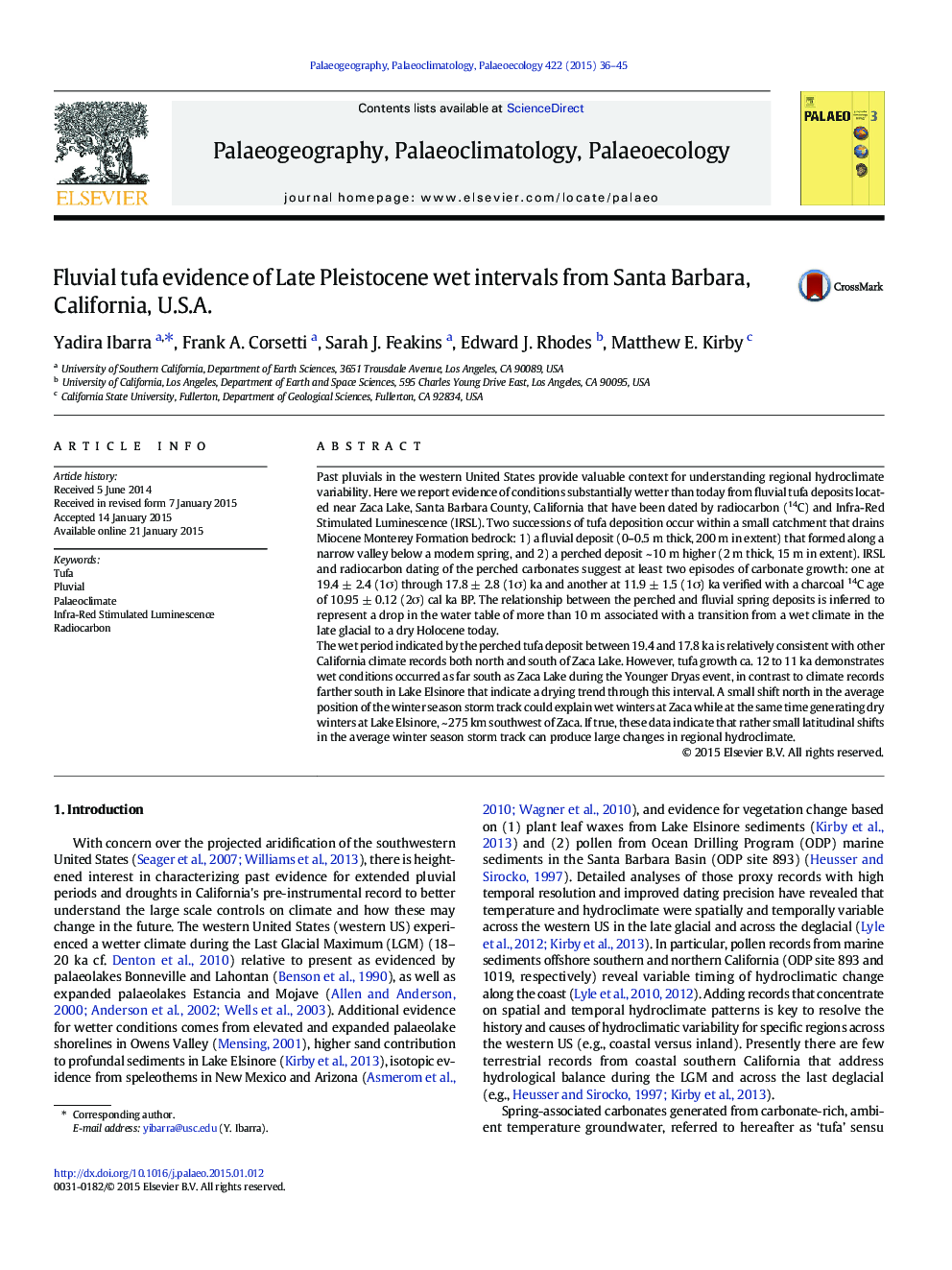| کد مقاله | کد نشریه | سال انتشار | مقاله انگلیسی | نسخه تمام متن |
|---|---|---|---|---|
| 4466018 | 1622168 | 2015 | 10 صفحه PDF | دانلود رایگان |

• Spring-associated carbonates (tufa) in Santa Barbara, CA were dated via 14C and IRSL.
• Fossil perched tufa ~ 10 m above a modern spring indicates past pluvial conditions.
• IRSL ages suggest tufa growth at 19.4 ± 2.4 to 17.8 ± 2.8 (1σ) ka and 11.9 ± 1.5 (1σ) ka.
• 14C from embedded charcoal suggests tufa deposition at 10.95 ± 0.12 (2σ) cal ka BP.
• IRSL and 14C of perched tufa provide terrestrial evidence of Late Pleistocene pluvial.
Past pluvials in the western United States provide valuable context for understanding regional hydroclimate variability. Here we report evidence of conditions substantially wetter than today from fluvial tufa deposits located near Zaca Lake, Santa Barbara County, California that have been dated by radiocarbon (14C) and Infra-Red Stimulated Luminescence (IRSL). Two successions of tufa deposition occur within a small catchment that drains Miocene Monterey Formation bedrock: 1) a fluvial deposit (0–0.5 m thick, 200 m in extent) that formed along a narrow valley below a modern spring, and 2) a perched deposit ~ 10 m higher (2 m thick, 15 m in extent). IRSL and radiocarbon dating of the perched carbonates suggest at least two episodes of carbonate growth: one at 19.4 ± 2.4 (1σ) through 17.8 ± 2.8 (1σ) ka and another at 11.9 ± 1.5 (1σ) ka verified with a charcoal 14C age of 10.95 ± 0.12 (2σ) cal ka BP. The relationship between the perched and fluvial spring deposits is inferred to represent a drop in the water table of more than 10 m associated with a transition from a wet climate in the late glacial to a dry Holocene today.The wet period indicated by the perched tufa deposit between 19.4 and 17.8 ka is relatively consistent with other California climate records both north and south of Zaca Lake. However, tufa growth ca. 12 to 11 ka demonstrates wet conditions occurred as far south as Zaca Lake during the Younger Dryas event, in contrast to climate records farther south in Lake Elsinore that indicate a drying trend through this interval. A small shift north in the average position of the winter season storm track could explain wet winters at Zaca while at the same time generating dry winters at Lake Elsinore, ~ 275 km southwest of Zaca. If true, these data indicate that rather small latitudinal shifts in the average winter season storm track can produce large changes in regional hydroclimate.
Journal: Palaeogeography, Palaeoclimatology, Palaeoecology - Volume 422, 15 March 2015, Pages 36–45